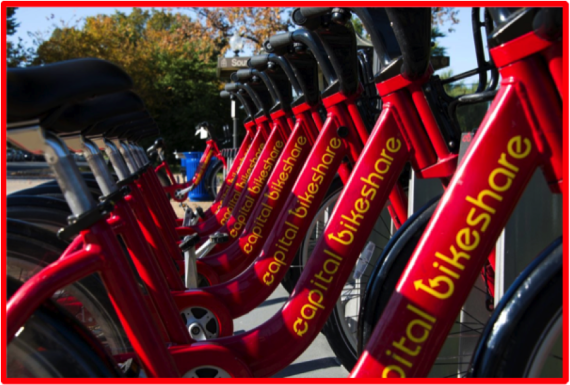Capital Bikeshare Avoided 4.4 Million Miles Of Driving Annually ($704,000 Of Gas)

Sign up for daily news updates from CleanTechnica on email. Or follow us on Google News!
Editor’s note: If you like statistics, you’ll like this post. If you like bike statistics, you’ll love this post. Some interesting stuff here, and a lot to chew on. The article is reposted from Bikocity.
Members of the Capital Bikeshare service drive 4.4 million miles (198 miles on average per person) less annually. Yep, that’s 22,222 people.

Image Credit: Capital Bikeshare
If they all drove average cars that achieved 25 MPG, they would have saved 176,000 gallons of gasoline. That translates to gasoline savings of $704,000 per year, assuming a cost of $4 per gallon, and the maintenance savings due to reduced automobile wear make that even better! (Each person saved $31 of gasoline.)
See how much can be saved even if everyone reduced their annual driving by as little as 198 miles annually?
Imagine the savings if it was 1,000 miles annually. That would be $160 per person, $3.55 million combined, or a total of 22 million miles. Five times more.
Speaking of that, 11% of the users reduced their driving by more than 1,000 miles, and 65% did not drive less at all. Overall, 50% of members drove less. 9% actually drove more.
The fact that the members drive 198 miles less annually shows they are using this program very lightly, though. This is probably caused by the fact that many or most members don’t actually use the program most of the time, bringing the average down.
More Important Details
44% of the members would have taken a bus or train if this bike sharing service did not exist, 38% of them would have walked, 5% would have ridden their own bike, and only 4% would have driven.
So, it’s main user base were not drivers in the first place. But this 4% of riders are helping to reduce one of the worst types of energy-related air pollution, which is automobile tailpipe emissions.
Automobile tailpipe emissions are particularly important because automobiles drive through residential areas in which people live, exposing everyone to toxic substances such as carbon monoxide, sulfur dioxide, and soot, no matter where they are. Plus, there’s the whole global warming ramification….

Chip in a few dollars a month to help support independent cleantech coverage that helps to accelerate the cleantech revolution!
Have a tip for CleanTechnica? Want to advertise? Want to suggest a guest for our CleanTech Talk podcast? Contact us here.
Sign up for our daily newsletter for 15 new cleantech stories a day. Or sign up for our weekly one if daily is too frequent.
CleanTechnica uses affiliate links. See our policy here.
CleanTechnica's Comment Policy

